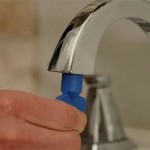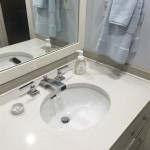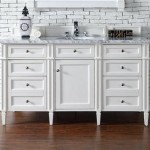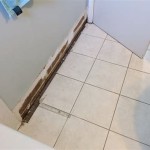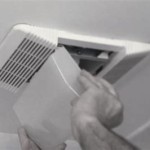Can I Use Bleach To Clean Bathroom Tiles? A Comprehensive Guide
The bathroom, with its perpetual humidity and frequent use, is a breeding ground for mold, mildew, and stubborn grime. Cleaning bathroom tiles effectively is crucial for maintaining hygiene and preventing the growth of these unwanted microorganisms. Bleach, a potent chemical disinfectant, is often considered a go-to solution for combating these issues. However, the question of whether bleach should be used on bathroom tiles is not a simple yes or no. It requires careful consideration of the type of tiles, the potential risks associated with bleach, and the availability of alternative cleaning methods.
This article provides a comprehensive guide to using bleach for cleaning bathroom tiles, outlining the pros and cons, detailing proper usage techniques, and offering alternative cleaning solutions to ensure a safe and effective cleaning process.
Understanding Bleach: Composition and Cleaning Properties
Bleach, typically referring to chlorine bleach, is a solution of sodium hypochlorite (NaClO) dissolved in water. Its powerful cleaning and disinfecting properties stem from its ability to oxidize organic matter. Oxidation breaks down the chemical bonds in molecules, effectively destroying bacteria, viruses, fungi, and removing stains. This makes bleach highly effective against mold, mildew, soap scum, and other common bathroom contaminants.
The effectiveness of bleach is influenced by several factors, including concentration, contact time, and water temperature. Higher concentrations and longer contact times generally result in better disinfection. Warm water can also enhance the cleaning power of bleach by increasing the rate of chemical reactions. However, it's crucial to adhere to recommended dilution guidelines to avoid damaging surfaces and causing harmful fumes.
While bleach is undeniably powerful, its aggressive nature necessitates caution. Improper use can lead to discoloration, etching, and corrosion of certain materials. Furthermore, the fumes produced by bleach can be irritating to the respiratory system and potentially dangerous in poorly ventilated areas. Therefore, a thorough understanding of bleach's properties and limitations is essential before using it on bathroom tiles.
Assessing Tile Type and Bleach Compatibility
Before using bleach on bathroom tiles, it is imperative to determine the type of tile and assess its compatibility with bleach. Different types of tiles react differently to chemical cleaning agents, and some are more susceptible to damage than others.
Ceramic and Porcelain Tiles: These are generally the most common types of bathroom tiles and are typically resistant to bleach. They are non-porous and can withstand the corrosive effects of bleach without significant damage. However, even with ceramic and porcelain tiles, prolonged exposure to undiluted bleach can potentially discolor grout lines or dull the surface sheen over time. Testing a small, inconspicuous area before applying bleach to the entire surface is always recommended.
Natural Stone Tiles (Marble, Granite, Limestone, Slate): Natural stone tiles are considerably more porous and sensitive to acidic and alkaline cleaners, including bleach. Bleach can etch, stain, and permanently damage natural stone surfaces. The porous nature allows the bleach to penetrate the stone, leading to discoloration and weakening of the material. Therefore, bleach should generally be avoided on natural stone tiles.
Grout: Grout, the material filling the spaces between tiles, is typically more porous than the tiles themselves. While bleach can effectively clean grout, it can also discolor it, especially if the grout is colored. Repeated use of bleach can also weaken the grout over time, making it more susceptible to cracking and crumbling. Using a grout-specific cleaner or a diluted bleach solution sparingly is a safer approach.
If unsure about the type of tile, consulting the tile manufacturer's instructions or a professional tile installer is advisable. This will help determine the appropriate cleaning methods and avoid potential damage.
Proper Bleach Application: Safety Precautions and Cleaning Procedures
If the bathroom tiles are compatible with bleach, following proper application procedures is crucial to ensure both safety and effectiveness. Prioritizing safety prevents health hazards and potential damage to surfaces.
Safety Precautions: Before working with bleach, the following safety precautions must be observed:
- Ventilation: Ensure adequate ventilation by opening windows and doors. Bleach fumes can irritate the respiratory system, especially for individuals with asthma or other respiratory conditions.
- Personal Protective Equipment (PPE): Wear appropriate PPE, including gloves, eye protection (goggles or safety glasses), and a mask. Gloves protect the skin from direct contact with bleach, preventing irritation and chemical burns. Eye protection shields the eyes from splashes, which can cause serious injury. A mask helps to minimize inhalation of bleach fumes.
- Dilution: Always dilute bleach according to the manufacturer's instructions. Typically, a ratio of 1 part bleach to 10 parts water is recommended for general cleaning. Using undiluted bleach is generally not necessary and can increase the risk of damage and health hazards.
- Mixing with Other Cleaners: Never mix bleach with other cleaning products, especially ammonia. Mixing bleach with ammonia creates chloramine gas, a highly toxic and potentially deadly chemical. Similarly, mixing bleach with acids, such as vinegar or toilet bowl cleaner, can produce chlorine gas, which is also extremely dangerous.
- Storage: Store bleach in a cool, dry place, away from children and pets. Keep the container tightly closed to prevent evaporation and accidental spills.
Cleaning Procedure: Once the safety precautions are in place, the cleaning procedure can be followed:
- Preparation: Remove loose debris, such as hair and dirt, from the tiles. Sweep or vacuum the area to ensure a clean surface for the bleach solution.
- Application: Apply the diluted bleach solution to the tiles using a sponge, cloth, or spray bottle. Ensure that the solution covers all areas affected by mold, mildew, or stains.
- Contact Time: Allow the bleach solution to remain on the tiles for approximately 10-15 minutes. This contact time allows the bleach to effectively disinfect and remove stains. Avoid leaving the bleach solution on for extended periods, as this can potentially damage the tiles or grout.
- Scrubbing: Use a scrub brush or sponge to scrub the tiles and grout lines. Apply moderate pressure to remove stubborn stains and grime. For grout lines, a grout brush can be particularly effective.
- Rinsing: Thoroughly rinse the tiles with clean water to remove all traces of bleach solution. Ensure that no bleach residue remains on the surface, as this can cause discoloration or irritation.
- Drying: Dry the tiles with a clean towel or allow them to air dry. Proper drying prevents the re-emergence of mold and mildew.
Alternative Cleaning Solutions: Safe and Effective Options
While bleach can be an effective cleaning agent for bathroom tiles, alternative cleaning solutions offer safer and often equally effective options, particularly for tiles that are sensitive to harsh chemicals or for individuals concerned about the health risks associated with bleach.
Vinegar: White vinegar is a natural acid that can effectively remove soap scum, hard water stains, and mild mildew. Dilute white vinegar with water in a 1:1 ratio and apply it to the tiles. Allow it to sit for 10-15 minutes, then scrub and rinse thoroughly. Vinegar is a gentler alternative to bleach and is safe for most tile types, including ceramic and porcelain.
Baking Soda: Baking soda is a mild abrasive that can help remove stubborn stains and grime without scratching the tiles. Create a paste of baking soda and water and apply it to the affected areas. Scrub gently with a sponge or brush, then rinse thoroughly. Baking soda is particularly effective for cleaning grout lines.
Hydrogen Peroxide: Hydrogen peroxide is a mild disinfectant that can kill mold and mildew. Apply 3% hydrogen peroxide to the tiles and allow it to sit for 10-15 minutes, then rinse thoroughly. Hydrogen peroxide is a good alternative to bleach for individuals with sensitivities to chlorine.
Commercial Tile Cleaners: Numerous commercial tile cleaners are specifically formulated for bathroom tiles. These cleaners often contain a blend of surfactants, detergents, and mild acids that effectively remove dirt, grime, and soap scum. Always follow the manufacturer's instructions when using commercial tile cleaners.
Steam Cleaning: Steam cleaning is a chemical-free method for cleaning bathroom tiles. Steam cleaners use high-temperature steam to loosen dirt and grime, effectively disinfecting the surface. Steam cleaning is particularly effective for cleaning grout lines and hard-to-reach areas.
Choosing the appropriate cleaning solution depends on the type of tile, the severity of the staining, and personal preferences. Regular cleaning, regardless of the method used, is essential for maintaining a clean and hygienic bathroom environment.

Can You Clean Bathroom Tiles With Bleach Well Worst Room

How To Clean With Bleach In A Bathroom Family Handyman

10 Things To You Need Clean With Bleach In The Bathroom Pinning Mama

10 Things To You Need Clean With Bleach In The Bathroom Pinning Mama

4 Ways To Clean Bathroom Tile Wikihow

Can I Use Bleach To Clean My Grout

Can You Use Clorox To Clean Tile Grout The Medic

7 Most Powerful Ways To Clean Tiles Grout Naturally

Spring Clean How To Tiles Correctly Tile Mountain

How To Remove Bleach Stains From Bathroom Tiles Tile Pro Depot
Related Posts
